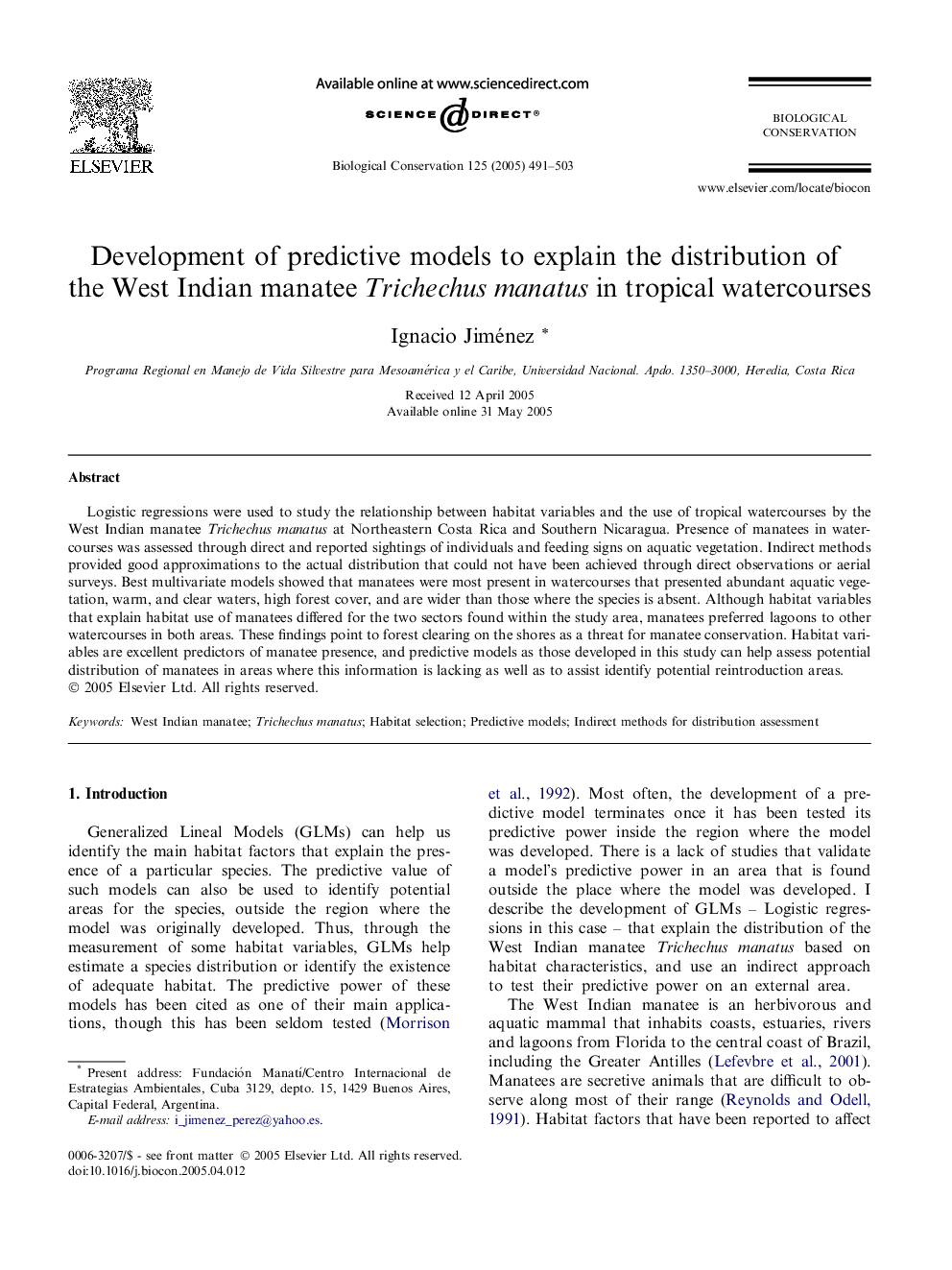| Article ID | Journal | Published Year | Pages | File Type |
|---|---|---|---|---|
| 9446065 | Biological Conservation | 2005 | 13 Pages |
Abstract
Logistic regressions were used to study the relationship between habitat variables and the use of tropical watercourses by the West Indian manatee Trichechus manatus at Northeastern Costa Rica and Southern Nicaragua. Presence of manatees in watercourses was assessed through direct and reported sightings of individuals and feeding signs on aquatic vegetation. Indirect methods provided good approximations to the actual distribution that could not have been achieved through direct observations or aerial surveys. Best multivariate models showed that manatees were most present in watercourses that presented abundant aquatic vegetation, warm, and clear waters, high forest cover, and are wider than those where the species is absent. Although habitat variables that explain habitat use of manatees differed for the two sectors found within the study area, manatees preferred lagoons to other watercourses in both areas. These findings point to forest clearing on the shores as a threat for manatee conservation. Habitat variables are excellent predictors of manatee presence, and predictive models as those developed in this study can help assess potential distribution of manatees in areas where this information is lacking as well as to assist identify potential reintroduction areas.
Related Topics
Life Sciences
Agricultural and Biological Sciences
Ecology, Evolution, Behavior and Systematics
Authors
Ignacio Jiménez,
